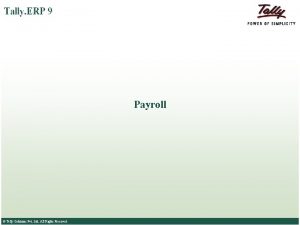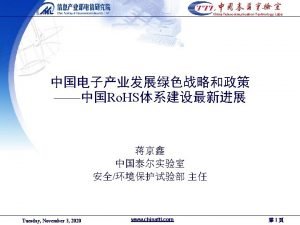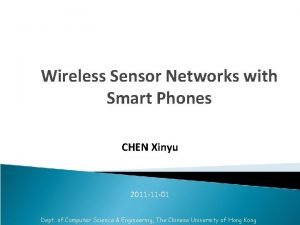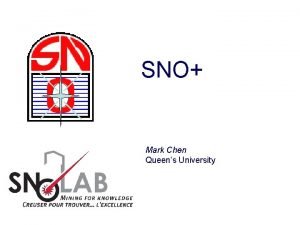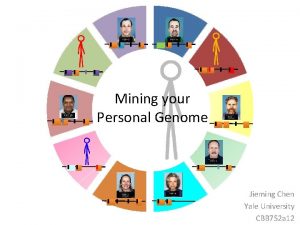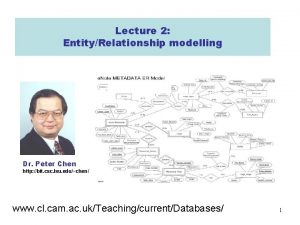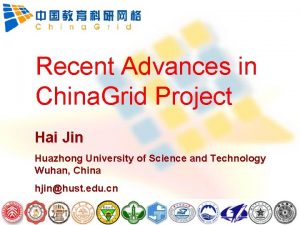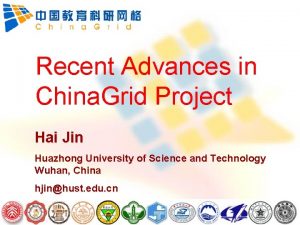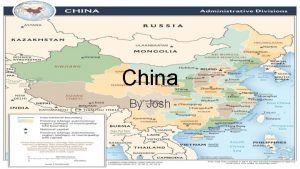Recent Advances of Communications Technology in China CHEN


















































- Slides: 50

Recent Advances of Communications Technology in China CHEN Junliang State Key Laboratory of Networking and Switching Technology Beijing University of Posts and Telecommunications August, 2007

Main Contents n n n Current Situation, Prospect and Challenge of Communications Networks Optical Transmission system 3 G and 4 G Mobile Communication Systems Next Generation Internet Next Generation Networks

Current Situation, Prospect and Challenge of Communications Networks in China










Optical Transmission System

Outline n n n Length of optical cable Development of optical communication technology National “ 863” / O-TIME Program of China National “ 863” / 3 T-Net Program of China Introduction to typical demonstrations Future prospect


Development of optical communication technology Direction 1:Ultra high-speed, large capacity, longdistance transport platform Direction 2: Intelligent, multiple-service and converged carrier platform l l l 4, 000 Km optical fiber laying in China 160× 10 Gb/s、80× 40 Gb/s DWDM system applied in optical network ULH/WDM ultra long-haul optical transmission device and system already commercialized ASON, MSTP deployed in MAN (Metropolitan Area Network) EPON applied in more than 20 cities, demonstration of FTTH already applied Multi-service driven optical access and switching has been the focus of research and popularization

National 863/O-TIME Program O-TIME(Optical Technology for Internet with Multi-wavelength Environment)plan is the national “Tenth five years' project” project 863 program’s research plan for optical communication technology -“Optical TIME” program. (2001 -2005) Typical characteristics of O-TIME program: Aiming at the trends and needs of broadband information network and optical communication technology, research on optical wavelength technology supporting Internet multiwavelength transmission, taking breakthrough in the four key high technologies to provide Internet with high-speed, broadband, flexible, efficient and intelligent physical transport platform: Ultra long-haul optical transmission Node optical switching Broadband optical access Intelligent optical interconnecting network

National “ 863”/O-TIME program roadmap Interconnecting, Test, Key tech, Key module, Milestone achievement Experimental system 2001 200 2 200 3 200 4 200 5 Design、Verify、 System-level tech、 Initiation Demonstration of service and application Eleventh five years' project

National “ 863”/3 T-Net program High performance broadband information networks(3 T-Net) l l l ü ü ü National “ 863” program high performance information network(3 T-Net) 3 T-Net = Tb/s Transport, Tb/s Switching, Tb/s Routing Duration: 2002 ---2006 Overall objective: Promote endemic government and network operation company to construct next-generation, operative, large-scale concurrent multimedia service and interactive multimedia services to support high performance broadband information demo network in the Yangtze River Delta, with the help of self-developed new network core equipments and application support environments of Tb/s level routing, switching and transmission. Specific objectives: Technical objective:Self-develop core node equipments of Tb/s level optical transmission systems, Tb/s level intelligent optical networks, Tb/s level routing equipments and etc. , and develop related network application support environment. Network objective:Build up a practical WAN high performance broadband information network. Application objective:Realize services and applications related to largescale concurrent DTV/HDTV broadband stream media, concerned with

National “ 863”/3 T-Net program IPTV Stream media on demand BOD Large capacity crossover Burst UNI Optical multicast Yangtze River Delta, China Accomplished in 2006

(1)China Advanced Information Optical Network (CAINONET) National “ 863” program Accomplished in 2001 (Location:Beijing) 基于SDH的 ATM交换机

(2)National natural science foundation of China network (NSFCNET) National natural science foundation Accomplished in 2001 (Location:Beijing)

(3)40 Gb/s SDH System n n n National “Tenth five” technology program, accomplished in 2005. Self-develop the first international 40 Gb/s SDH optical transmission equipment in accordance with national standard of ITU-T STM-256 frame structure. Realize 40 Gb/s SDH signal error-free transmission over G. 652 and G. 655 optical fiber. Source:Fiberhome Technology STM-256 ADM 80 km STM-256 TM TM 80 km STM-256 ADM TM TM 80 km Dual fiber Self-healing ring 80 km 80 km 480 km Point to point transport link

(4)80× 40 Gb/s DWDM System n n National “ 863” program project, accomplished in 2006. Develop 80× 40 Gb/s DWDM system equipment, 40 Gb/s optical transmission adopting NRZ code, realizing 800 Km 80 x 40 Gb/s transmission over the G. 652 optical fiber. Overcome key technology problems: Forward Error Correction (FEC), Dynamic Gain Equilibrium(DGE), Optical Transceiver Module, 40 G OTU, Transport code and modulate/demodulate technology, Precise chromatic dispersion management technology. Build up 80× 40 Gb/s DWDM Shanghai—Hangzhou practical project. Source :Fiberhome Technology

(5)160 X 10 Gb/s ultra long-haul optical transmission system n n n National “ 863” program, accomplished in 2005. Self-develop optical transmission system of 1. 6 Tb/s, relay transmission distance of 3000 km 5000 km (G. 652、G. 655 optical fiber) without electricity provision. Build up ULH/WDM network demo project in Xinjiang area (1000 km relay transmission over G. 652 optical fiber without electricity provision). Master completely core technologies of ULH/WDM system (C+L wavelength band), Raman optical fiber amplifier, test and application. . . Two standard recommendations (D. 735、D. 736) are accepted by ITU-T, leading draft qualification of ITU-T G. raman. Source :ZTE

(6)Large capacity ASON Equipment n n National 863 program, accomplish in 2006. Self-develop ASON node devices, supporting services of link layer Multicast-ASON and Burst-ASON, overcoming ASON large-scale hierarchical routing technology. n n Deployed in 863/3 T-Net and Telecom networks, also applied in Hainan district. Multiple recommendations are adopted by ITU-T. Source :Huawei Technology

(8)Optical Burst Switching Test-bed Source: BUPT, SJTU and so on. 1、 National natural science foundation , National 863 program, Burst service based novel optical switching technology. 2、First domestic institute (leading in the world) of successfully building up Optical Burst Switching (OBS) test-bed, supporting image, voice, data and grid service access.

Research direction of future optical communication technology n Service-driven, flexible and dynamic architecture and technology of optical networks n Deploying mechanism of optical wavelength attributes and application technologies in the next-generation network n Intelligent optical switching and optical inter-connecting technology n Autonomic optical networks and condition monitoring (Selfawareness, Self-adaptation, Self-organization) n Intelligence, Packet transmission and Extension of MPLS protocol(G -MPLS、T-MPLS、Wireless MPLS. . . ) n Large-scale broadband optical access application technology n Crossover convergence technology (optics and wireless, optics and sensoring, optics and service, optics and resource, optics and computing …)

3 G and 4 G Mobile Communication Networks

China 3 G Mobile Systems TD-SCDMA n LAS-CDMA n

TD-SCDMA n n n TD-SCDMA as the world’s 3 rd 3 G mobile system was officially accepted by the ITU-R in May 2000; System works in TDD and uplink synchronous mode, supporting asymmetric data transmission; Series of new technologies are adopted in the system

TD-SCDMA



LAS-CDMA n n LAS-CDMA – Large Area Synchronous CDMA The core innovation is the discovery of a group of pseudo-random codes called LA/LS codes which are capable to decrease the various kinds of interferences (Intersymbol interference, multiple address interference and adjacent cell interference)

多址码的特性 1 ----传统CDMA G – Processing Gain • Autocorrelation function G-1/2 Relative delay • Crosscorrelation function G-1/2

多址码的特性 2 ----LAS-CDMA Autocorrelation function: Crosscorrelation function: IFW: Interference free window 0 0 IFW

4 G System Development -- FUTURE Project

n n Fu. TURE – Future Technologies for Universal Radio Environment as a part of China High-Tech 863 program. Phase 1: Six universities cooperating with six companies developed six transmission schemes for B 3 G mobile. Phase 2: Jointly develop wireless network experimental system supporting both FDD and TDD on a common platform. Phase 3: Trial & Pre-commercial System will be developed.

GMC/OFDM FDD SYSTEM Coding Mapp. Intl. STC/SM Insert Pilot Sub-Channel Transmitter 1 Sub-Channel Transmitter 2 Ø MCU Freq. Synth. Sub-channel Receiver 1 Sub-channel Receiver 2 3 Sub-channel Receiver Interface and Control Iterative receiving technology; Distributed radio network architecture; Ø MIMO-GMC technology in uplink; Ø MIMO-OFDM in downlink; Ø MIMO adaptive link transmission technology Rx. RF RF Rx sub. Tx. RF system sub ---system MCAFB / FFT Multi- Time & Freq. filter bank Synch. Ø FDMA and TDMA hybrid multiple access; A/D A/D D/A Sub-Channel Transmitter N Intf …. Ø 多 多 多 载 载 载 波 波 波 A/D A/D Rx/Tx filter Filters Rx/Tx filter 100 Mb/s peak uplink and downlink high-speed transmission rate; …. MCSFB / IFF T Ø Sub-Channel Transmitter 3 Rx. RF RF Rx sub. Rx. RF -system sub --system N Baseband Decod. RF and Antennas De. Intl De. Map ST JD CHE Antennas

Breakthrough of B 3 G Theory ——B 3 G TDD Network Architecture o Flat Radio Access Network – All-IP based architecture – Short latency o Novel Cellular Architecture – Group Cell – Slide Handover – User always in cell center – Solve “smaller cell” problem – Avoid “cell edge” effect – Avoid frequent handover – Enlarge coverage area o Fully Explore Space Diversity – Distributed Antenna Array – Virtual MIMO – Multi-hop, Relay

B 3 G外场试验主要特征 B 3 G Field Trial characteristics

典型业务 n 移动高清IPTV n 移动高清视频摄录 n 无线移动视频会议 n 无线移动视频点播 n 无线移动Vo. IP电话 n 无线移动Web浏览 n 无线移动FTP文件传输 Services Demo n Wireless IPTV n Wireless Remote Video n Wireless Video Conference n Wireless VOD n Wireless Vo. IP Phone n Wireless Web Browse n Wireless FTP

NEXT GENERATION INTERNET NGI Given in the presentation of Prof. MA Yan

NEXT GENERATION NETWORK NGN

CN 2 – Network Topology Designed and Deployed by China Telecom




THANK YOU!
 Recent advances in dental ceramics
Recent advances in dental ceramics Advances in technology during wwii
Advances in technology during wwii Advances in memory technology
Advances in memory technology Chen chen berlin
Chen chen berlin Axis powers
Axis powers Payroll in tally
Payroll in tally Chapter 9 intellectual development in the first year
Chapter 9 intellectual development in the first year Advances in real-time rendering in games
Advances in real-time rendering in games Photodesintegration
Photodesintegration Short term loans and advances
Short term loans and advances Opto-electronic advances
Opto-electronic advances Asset classification norms
Asset classification norms Lurbinectedin posologie
Lurbinectedin posologie Communications technology
Communications technology China automotive technology and research center
China automotive technology and research center China telecommunication technology labs
China telecommunication technology labs China titans energy technology group
China titans energy technology group China telecommunication technology labs
China telecommunication technology labs Recent trends in ic engine
Recent trends in ic engine Recent developments in ict
Recent developments in ict Recent developments in object detection
Recent developments in object detection Is college worth it synthesis essay
Is college worth it synthesis essay Explain recent trends in foreign trade of india
Explain recent trends in foreign trade of india Skimming and scanning examples
Skimming and scanning examples Current trends in project management
Current trends in project management Recent demographic changes in the uk
Recent demographic changes in the uk Schoology myips login
Schoology myips login Stippling
Stippling After a skydiving accident laurie
After a skydiving accident laurie A friend emails you the results of a recent high school
A friend emails you the results of a recent high school Active voice headlines
Active voice headlines Http drive google com
Http drive google com Udin login
Udin login Mis trends
Mis trends Mpgu
Mpgu Chen xinyu
Chen xinyu Nêu các bước chèn hình ảnh
Nêu các bước chèn hình ảnh Mark chen queens
Mark chen queens Andrew chen finance
Andrew chen finance Proxyless nas
Proxyless nas Kaifei chen
Kaifei chen Xinyun chen
Xinyun chen Rory chen
Rory chen Genome.gov
Genome.gov Entity types
Entity types Vin chen
Vin chen Guttman effect
Guttman effect Guanliang chen
Guanliang chen It was introduced by chen in 1976
It was introduced by chen in 1976 Pengertian entity relationship diagram
Pengertian entity relationship diagram Hou pei chen
Hou pei chen





